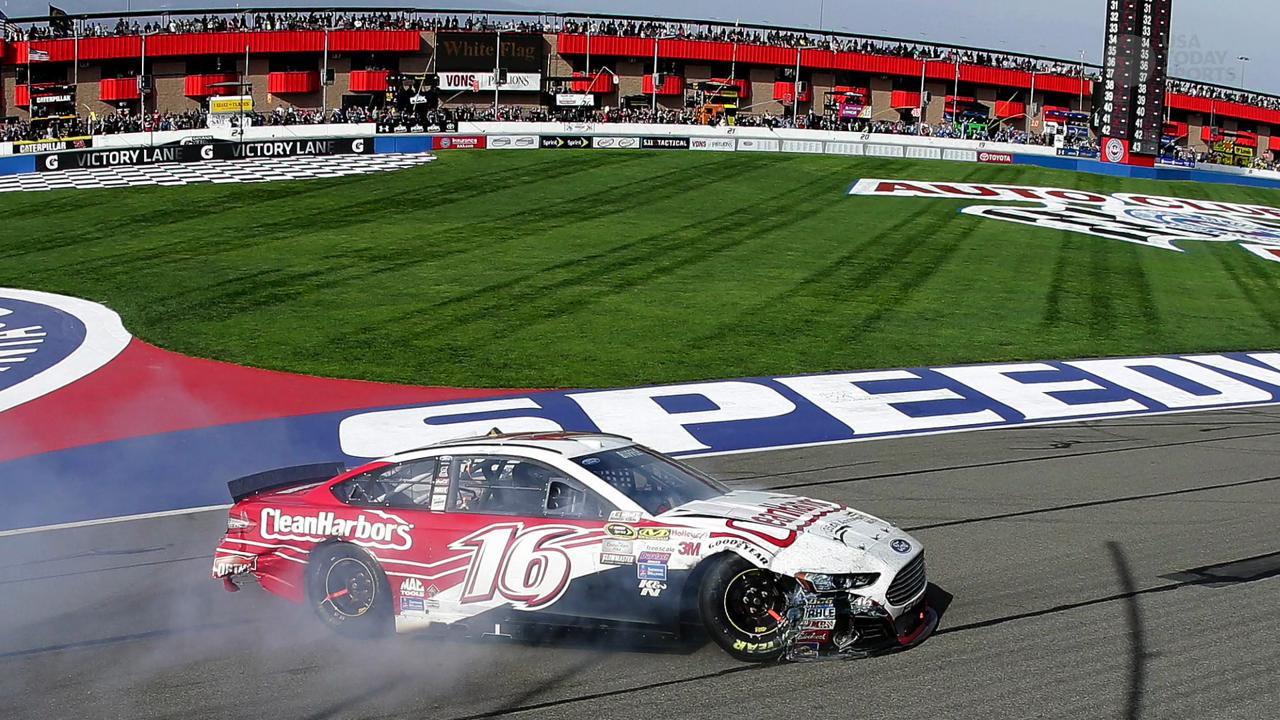Auto Club's seams could make changing lanes an adventure

FONTANA, Calif. — Once again, it seems seams could play a role in Sunday’s race at Auto Club Speedway.
NASCAR’s oldest asphalt surface, which dates to 1996, has seams separating the lanes all the way around the 2-mile oval. There are essentially five lanes with unintentional dividing lines between them, and drivers have to dodge the tar-filled strips in order to maximize their speed.
“The hardest part about the seams is just getting hung on one,” Kevin Harvick said. “That’s really what you don’t want to do. If you have the tire right on (the seam), it just grabs it like glue and it goes in the direction that you don’t really want to go in.”
Think of it like cross-country skiing: It’s OK to ski in someone else’s tracks until it comes time to change direction. The seams are the same way because they want to keep the car pointed toward the way they’re heading not the direction the driver is steering.
That can be treacherous. Justin Allgaier found that out the hard way during Friday’s Xfinity Series practice, when he hit a seam the wrong way and got out of shape, resulting in contact with the wall and requiring the team to pull out a backup car.
Drivers typically navigate the seams in one of two ways: Either drive in the lane between them or put a seam between the wheels.
“The tar doesn’t react well to the rubber on the tires,” Brad Keselowski told Paste BN Sports. “You lose all grip temporarily and you lose a chunk of speed, depending on where you cross it. If you cross it on entry into the corner, the car will slide up the racetrack toward wall.”
There aren’t many other tracks on the circuit that have seams. Chicagoland Speedway has them to a lesser degree; Kansas Speedway used to have some, but the track was repaved.
That doesn’t mean they’re a bad thing. In fact, Carl Edwards said it was “too bad” more tracks didn’t have seams.
“You could write a book about a lap at this place, there’s so much happening out there,” Edwards said. “Where you place your tires, how you enter the corner, what the guy in front of you is doing. … It’s a little bit unpredictable, it’s definitely tough and to me, that’s part of the fun.”
Goodyear director of racing Greg Stucker said the tire reacts to the seams somewhat like a car driving over a small patch of black ice on the road. It’s the difference in the surfaces — one slicker than the other — that makes the tire scoot over it before grabbing the asphalt again.
“That’s what creates the inconsistency there,” he said.
One element of how seams could factor into the race: They make it harder for drivers to defend the momentum of competitors behind them, Keselowski said.
“Sometimes you see a car that’s running the high lane behind you and you move up in that lane, but because of the way the seams are at California, you can’t switch lanes very easily,” he said. “As you try to cross over one of those seams, it’s a huge penalty. Every one of those lanes has decent speed, so it makes it a lot harder to block as a driver.”
In turn, that creates more passing opportunities. And at a track already set to benefit because of the lower downforce package and a wide racing surface, it all could add up to an entertaining race on Sunday.
Follow Gluck on Twitter @jeff_gluck
PHOTOS: 2016 Sprint Cup schedule and venues